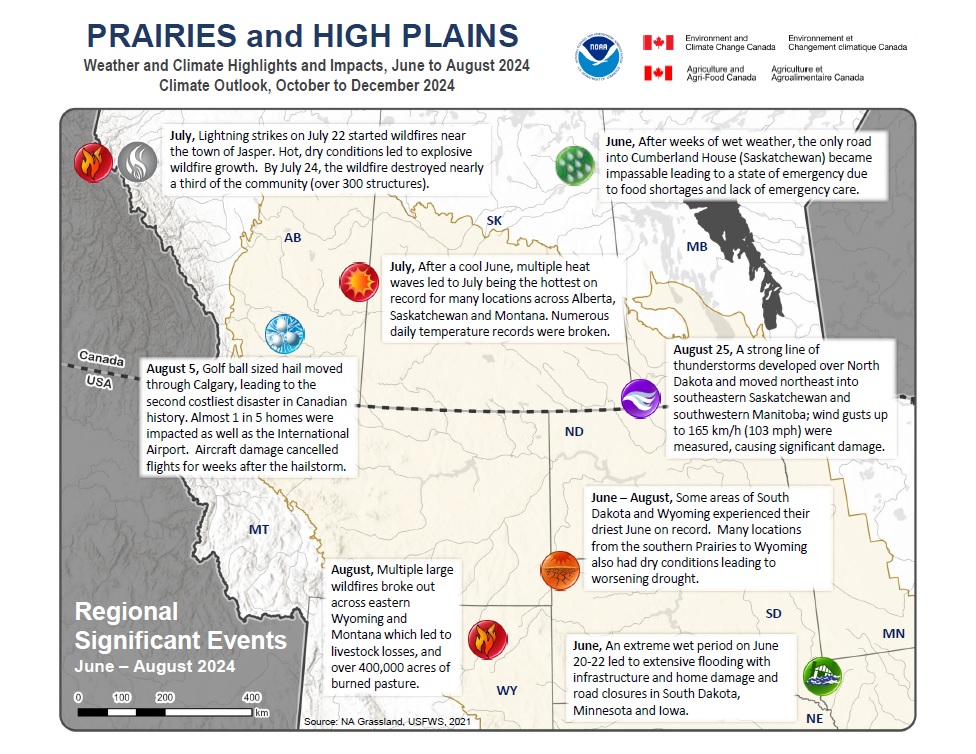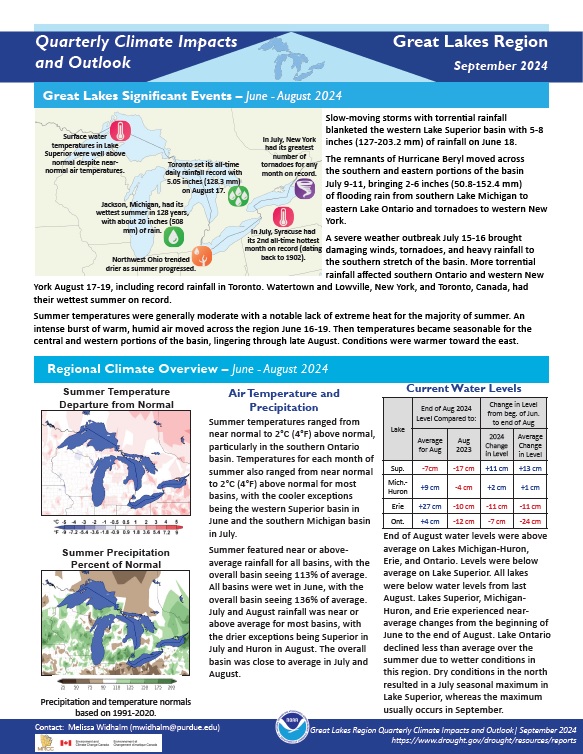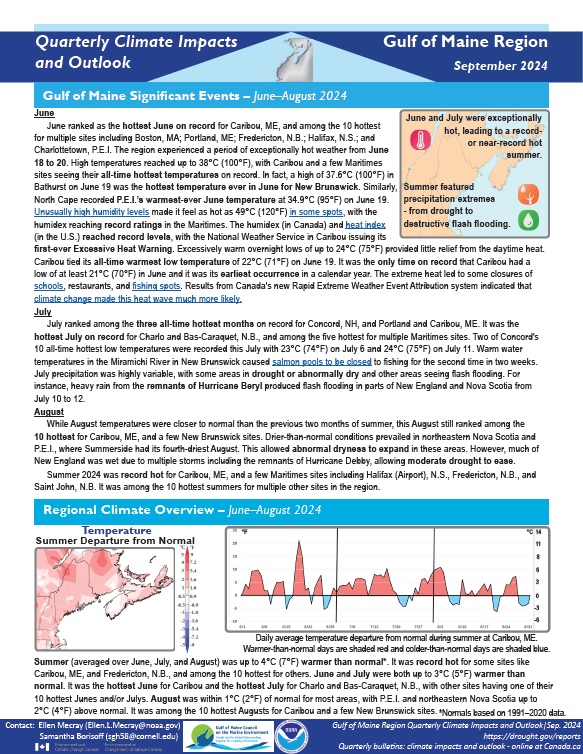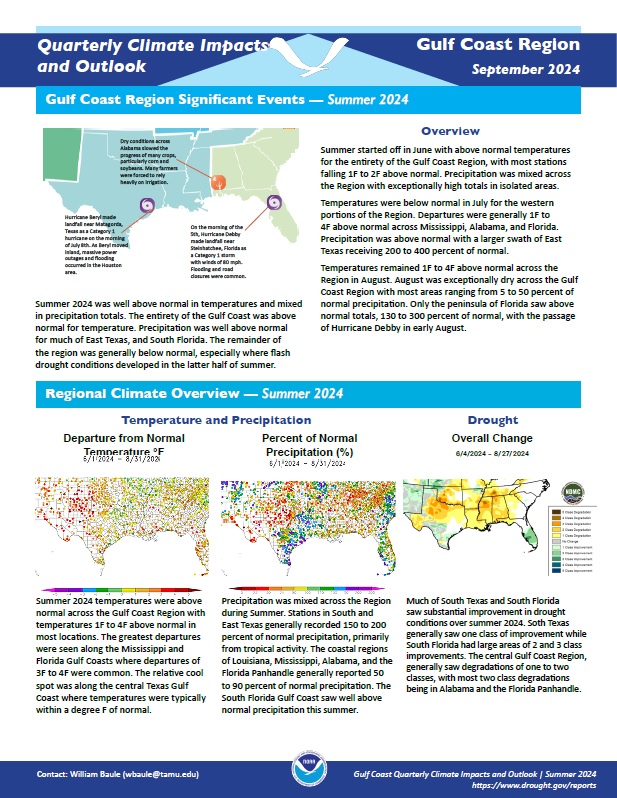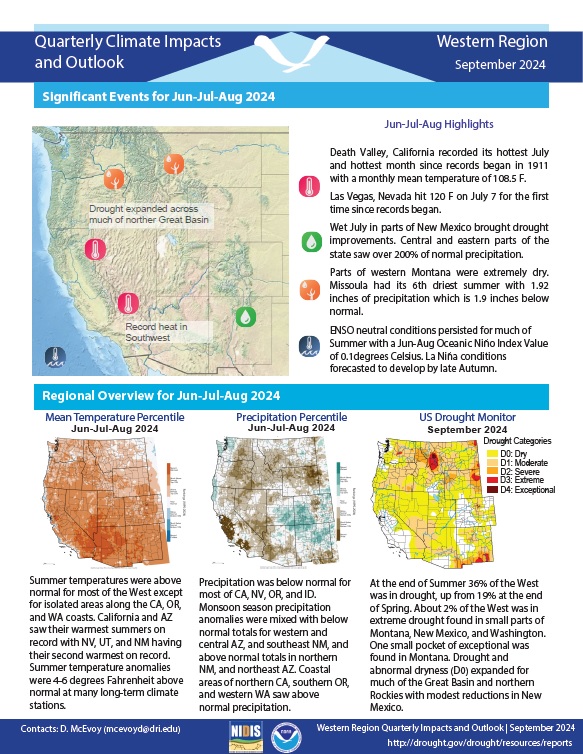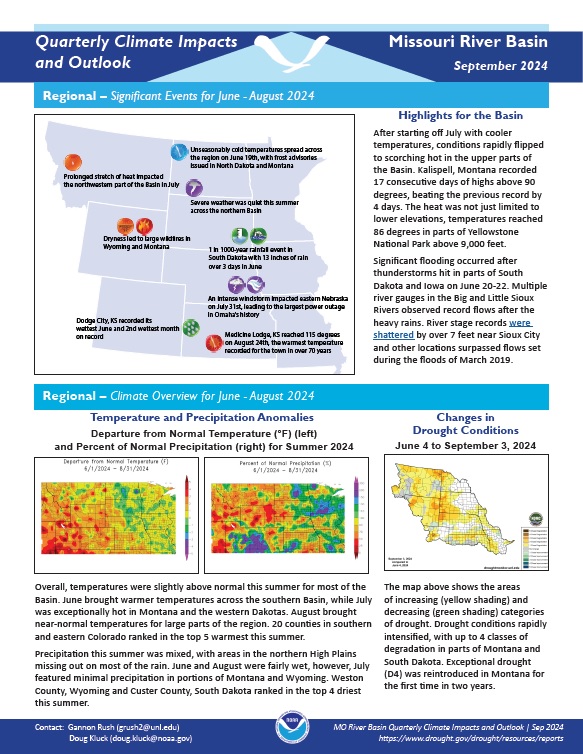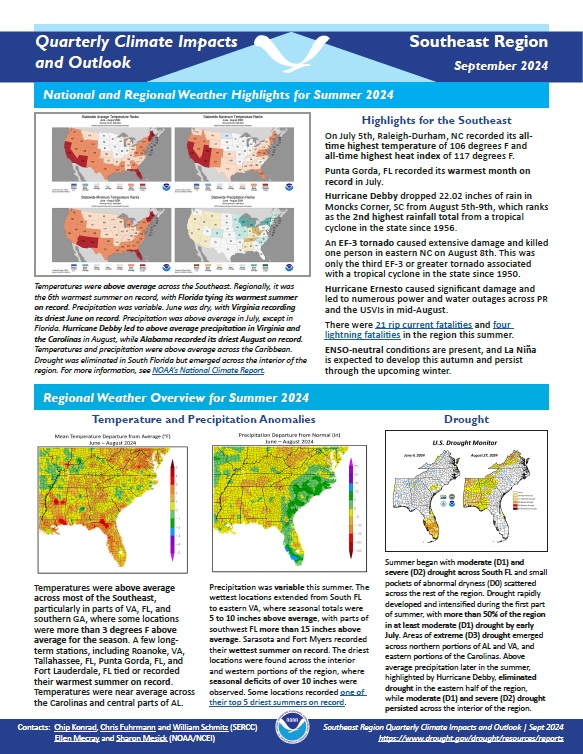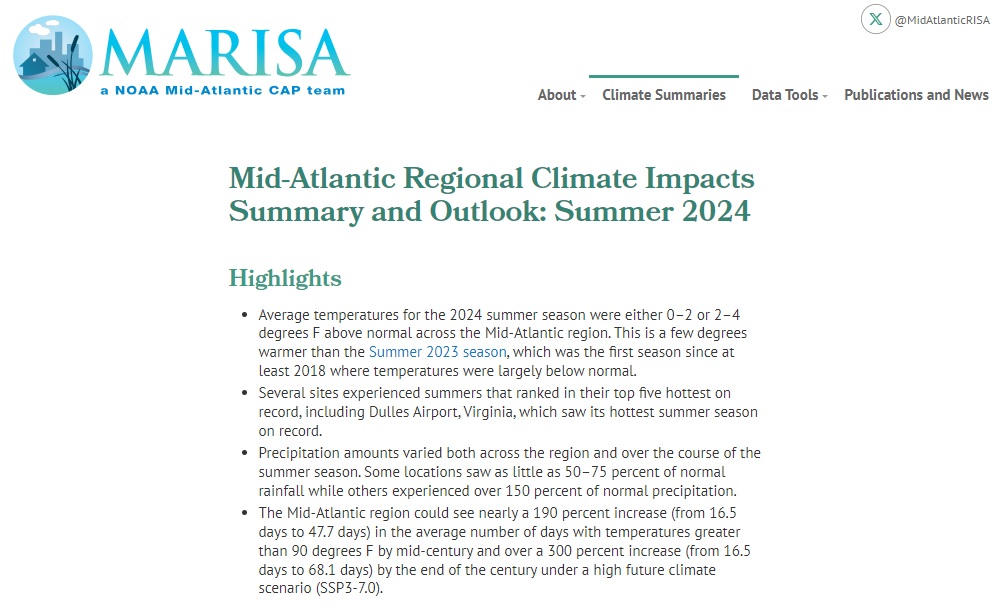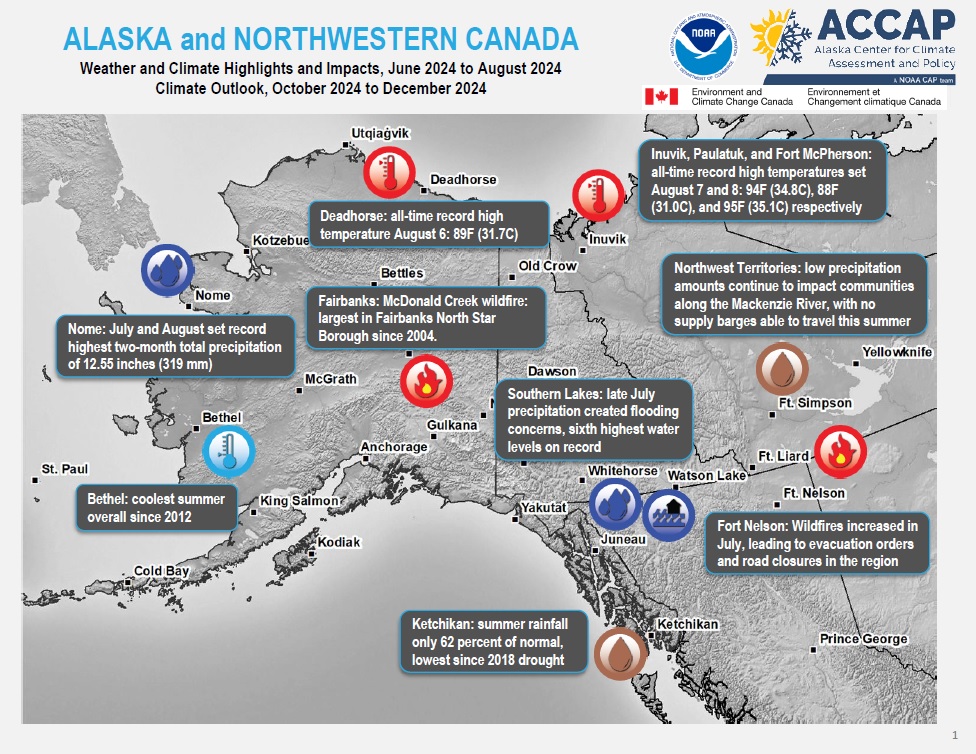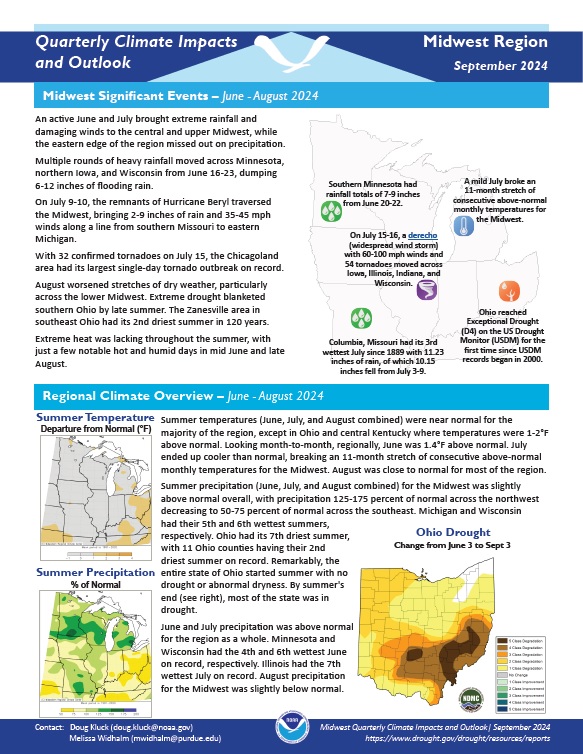Quarterly Climate Impacts and Outlook for the Canadian and U.S. Prairies and High Plains for June–August 2024, with an outlook for October–December 2024. Dated September 2024.
Quarterly Climate Impacts and Outlook for the Great Lakes Region for June–August 2024. Dated September 2024.
Summer temperatures ranged from near normal to 2°C (4°F) above normal, particularly in the southern Ontario basin. Summer featured near- or above-average rainfall for all basins, with the overall basin seeing 113% of average.
Quarterly Climate Impacts and Outlook for the Gulf of Maine Region for June–August 2024. Dated September 2024.
Summer was up to 4°C (7°F) warmer than normal. It was record hot for some sites like Caribou, Maine, and Fredericton, N.B., and among the 10 hottest for others. Precipitation for summer ranged from 50% of normal to 175% of normal.
Quarterly Climate Impacts and Outlook for the Gulf Coast Region for June–August 2024. Dated September 2024.
Summer temperatures were above normal across the Gulf Coast Region with temperatures 1°F to 4°F above normal in most locations. The greatest departures were seen along the Mississippi and Florida Gulf Coasts where departures of 3°F to 4°F were common. Precipitation was mixed across the Region during summer.
Quarterly Climate Impacts and Outlook for the Western Region for June–August 2024. Dated September 2024.
Summer temperatures were above normal for most of the West except for isolated areas along the California, Oregon, and Washington coasts. California and Arizona saw their warmest summers on record with Nevada, Utah, and New Mexico having their second warmest on record. Precipitation was below normal for most of California, Nevada, Oregon, and Idaho.
Quarterly Climate Impacts and Outlook for the Missouri River Basin for June–August 2024. Dated September 2024.
Temperatures were slightly above normal this summer for most of the Basin. Precipitation this summer was mixed, with areas in the northern High Plains missing out on most of the rain.
Quarterly Climate Impacts and Outlook for the Southeast and Caribbean Region for June–August 2024. Dated September 2024. (Updated October 2024 to add Spanish translation of Caribbean information.)
Quarterly Climate Impacts and Outlook for the Mid-Atlantic Region for June–August 2024. Dated September 2024.
Average temperatures for the 2024 summer season were either 0–2°F or 2–4°F above normal across the Mid-Atlantic region. Precipitation amounts varied both across the region and over the course of the summer season. Some locations saw as little as 50%–75% of normal rainfall while others experienced over 150% of normal precipitation.
Quarterly Climate Impacts and Outlook for Alaska and Northwestern Canada for June–August 2024, with an outlook for October–December 2024. Dated September 2024.
Environment and Climate Change Canada, NOAA, and partners created these climate outlooks to inform the public about recent climate impacts within their respective regions. Each regional report contains easy-to-understand language, and anyone can access them through the U.S. Drought Portal.
Quarterly Climate Impacts and Outlook for the Midwest Region for June–August 2024. Dated September 2024.
Summer temperatures were near normal for the majority of the region, except in Ohio and central Kentucky where temperatures were 1–2°F above normal. Summer precipitation (June, July, and August combined) for the Midwest was slightly above normal overall, with precipitation 125%–175% of normal across the northwest, decreasing to 50%–75% of normal across the southeast.


